Estimated reading time: 8 minutes
As a food-loving traveler, my favorite part of train stations are the Ekiben bento boxes! They are just waiting to be devoured (by me). Though usually eating or drinking on the Japanese local trains is frowned upon, long distance trains are the exception.
Buy a Japan Rail Pass for the most convenient traveling experience!
- What is ekiben in Japan?
- Where can I buy ekiben?
- Watch the Ekiben Video
- How much are they?
- Origins and History of Ekiben
- Why People Buy Ekiben for the Train! 🚆
- Ekiben at Kyoto Station (We Tried ‘Em!)
- Kyoto Station Treat: Katsu Bento
- Mid-Journey Munchies: Salmon Bento
- Thicc Katsu Sando Perfection
- The Ekiben Experience: More Than Just a Meal
What is ekiben in Japan?
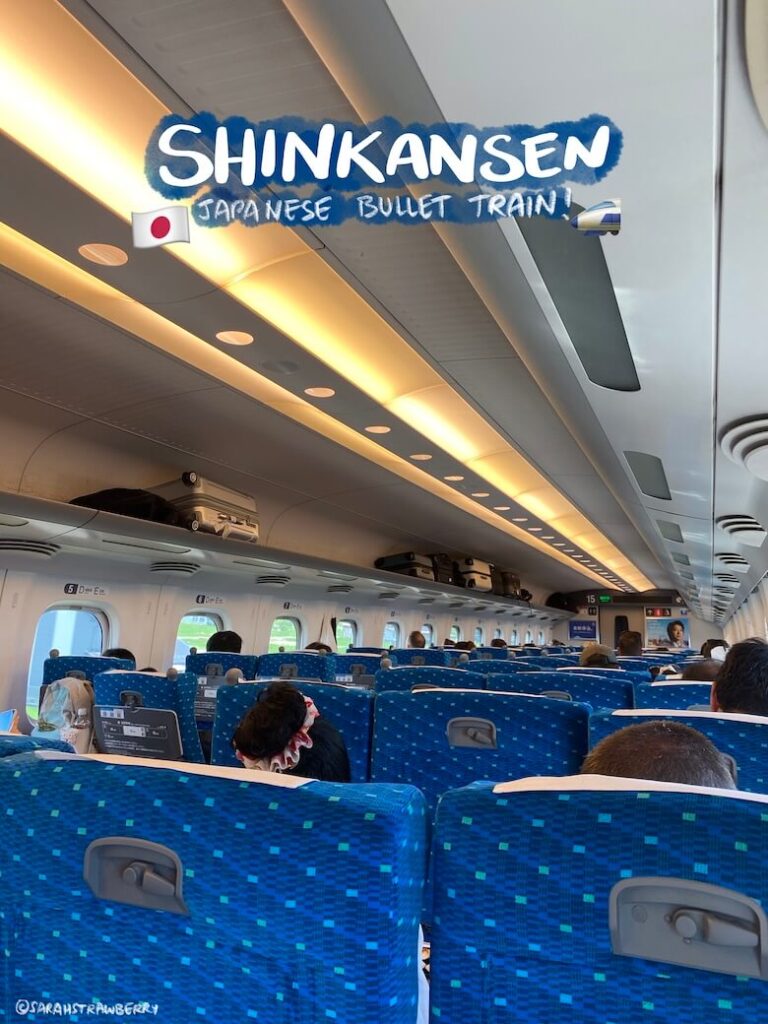
The word “ekiben” is a combination of two Japanese words:
- “Eki” (駅) meaning “railway station”
- “Ben” (弁), which is short for “bento” (弁当) meaning “boxed meal”
So “ekiben” literally translates to “station bento” or “railway station boxed meal”.
To sum up, ekiben is a portmanteau for train station bento! People buy them for long journeys on the shinkansen, the Japanese bullet train. There are many different types of ekiben sold in the railway station, and so many kinds ekiben shops.
こんばんは😊東京から広島に帰っている途中です🚄💨駅弁は『まぐろいくら弁当』です🍱🐟旨かったですよぉ~😋✨️#東京駅 #駅弁 #新幹線 #まぐろいくら弁当 #マグロ #イクラ #晩飯 #グルメ pic.twitter.com/cASR2tc4WX
— mitsu 広島 (@6Hv99s3HTx29820) August 24, 2024
These bento boxes are a step up from regular convenience store packaged lunches. The high-quality ingredients usually include a carb (rice/noodles), vegetables, and a protein source. Some common side dishes are rolled omelets, tempura, and fried cutlets. Special ekiben boxes even include local specialties only available in the area- like snow crab, wagyu beef, or even octopus.
Where can I buy ekiben?
8月4日、東京駅グランスタつばめグリル。店の看板や弁当の帯に「駅弁」の文字が入ったと知り、久々に「つばめ風ハンブルグステーキ弁当」1,930円を買う。他に「ハンブルグステーキとカキフライ弁当2,000円、「ハンブルグステーキ弁当」1,296円を購入。相変わらず手作りで体にやさしい味。#駅弁 pic.twitter.com/hCwxhRInjq
— 上ちゃん【駅弁の小窓】 (@ekibento) August 13, 2024
You can buy ekiben in train stations, where the Japanese bullet train passes. In addition, some stations that serves long-distance trains (not necessarily the shinkansen) also sell them.
The most famous station to get the ekiben is Tokyo Station. In any case, most train stations sell snacks though!
Watch the Ekiben Video
How much are they?
They are around ¥1,000-¥2,000, depending on the ingredients!
Fun Fact 🚄
Did you know the first ekiben appeared during the Meiji period? That’s right, these delicious bento have been fueling Japanese travelers for over a century! From humble rice balls to elaborate bento boxes, the world of ekiben has evolved faster than a bullet train.
Origins and History of Ekiben
The first ekiben is generally believed to have appeared in 1885 at Utsunomiya Station, when the Nihon Tetsudo line linked it to Ueno Station in Tokyo. These early ekiben were simple:
Two onigiri (rice balls) with umeboshi (pickled plum) and takuan (pickled radish) wrapped in bamboo leaves. They were sold for 5 sen (an old Japanese currency unit), which was considered expensive at the time
明治18年の今日7月16日、宇都宮駅開業。この時、おにぎり2個で5銭の駅弁が発売された
— 博物月報 (@hakubutu) July 16, 2024
写真は日本鉄道構内営業中央会による、この時の駅弁の模型。おにぎりがタクアンに比べあまりに巨大で、何合炊いたのかと思ったが、これはイメージで実物大ではないそう
横浜市歴史博物館 大おにぎり展2014の展示から pic.twitter.com/5D2iGG25Mj
However, there are competing claims about the origin of ekiben:
- Shirakiya Ryokan claims to have created the first ekiben in front of JR East’s Utsunomiya station
- Maneki Shokuhin claims to have sold the first bento boxes in 1890 at Himeji station, featuring a more elaborate meal with sea bream, various side dishes, and white rice
Particularly, ekiben became particularly popular during the late Showa period (1926-1989). This era saw a significant increase in the variety and availability of ekiben, as they transitioned from simple rice balls to more elaborate bento boxes featuring local specialties. The post-war period was also a turning point, as ekiben became more accessible to the general public, not just a luxury item for the upper classes. By the mid-20th century, ekiben were widely sold at train stations, catering to travelers on long-distance trains and contributing to the rich culture of Japanese railway cuisine.
Why People Buy Ekiben for the Train! 🚆
1. Convenience: No need to rush to the dining car – your gourmet meal is right in your lap!
2. Variety: From Hokkaido’s sea urchin to Hyogo Prefecture’s Kobe beef, there’s an ekiben for every palate.
3. Cultural Experience: It’s like a crash course in regional Japanese specialties.
4. Special containers: Ekiben containers range from the regular to the unusual! Like the Akashi octopus bento box– which is shaped like the clay pots used to catch octopi.
🚄 Ekiben 🤩 pic.twitter.com/tAu1Q8h5Ah
— BlackjellyDevil (@BlackjellyDevil) April 1, 2024
Ekiben at Kyoto Station (We Tried ‘Em!)
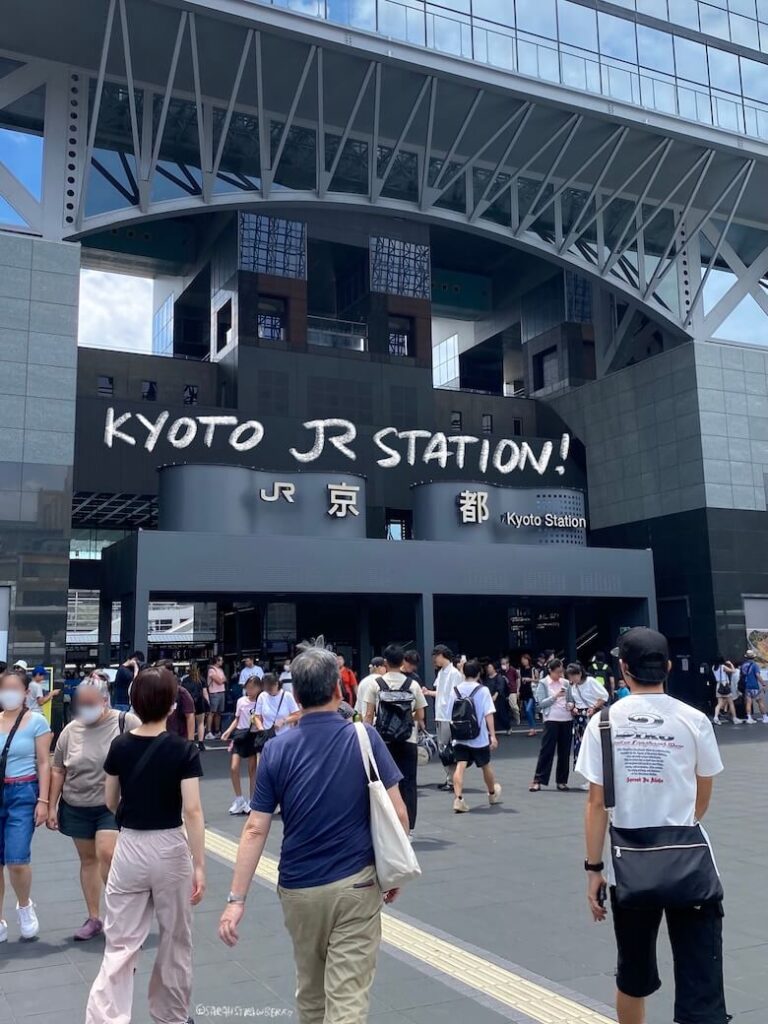
It was my first time on a shinkansen, and I was clutching a stack of bento boxes with all my might. We arrived with little time to spare at the Kyoto Station, imagining that buying an ekiben would be pretty quick like in the convenience stores. WRONG! It was crowded, and the popular ekiben shops have queues.
The most paralyzing part was the many different types of bento on display. How do I even choose the best ekiben?! Hurriedly, I grabbed the most appetizing ones and we ran to our train platform, hoping that the station bentos I picked were delicious. Sadly, I didn’t see any self-heating bentos during my grab-n-go situation.
Do you eat ekiben cold?
Yes! They are usually stored in refrigerated displays, and people eat them this way. The vendors create these bento boxes considering that they will be eaten cold, adjusting their recipes and techniques. In addition, there are self-heating bento boxes available for purchase as well!
Kyoto Station Treat: Katsu Bento
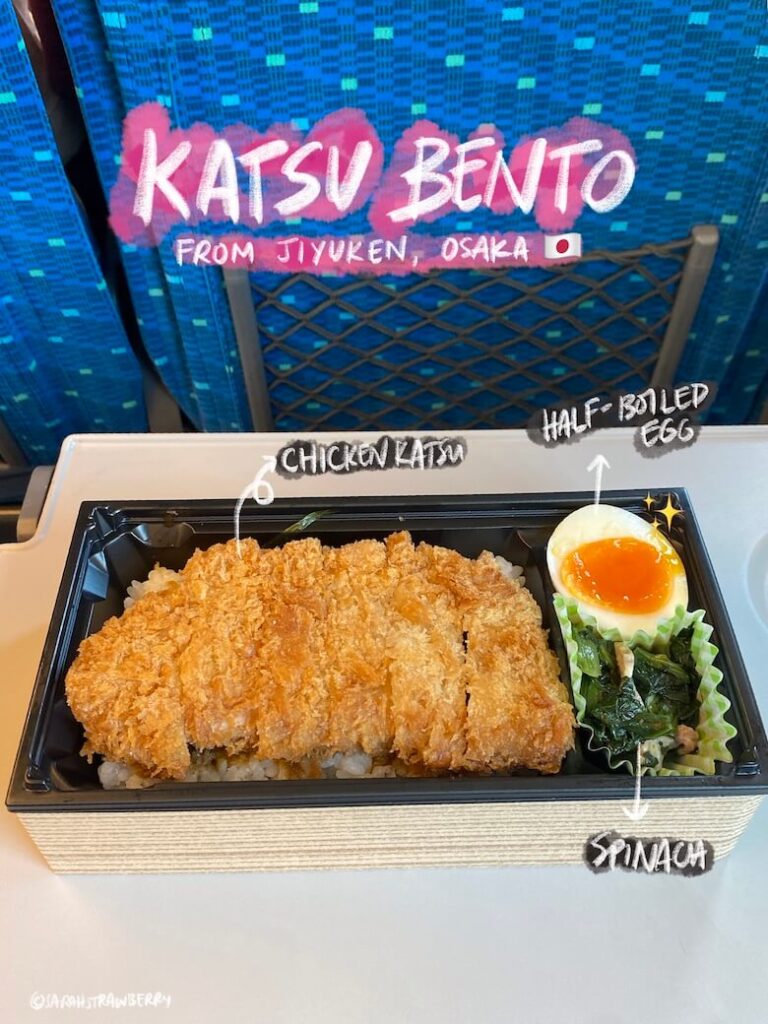
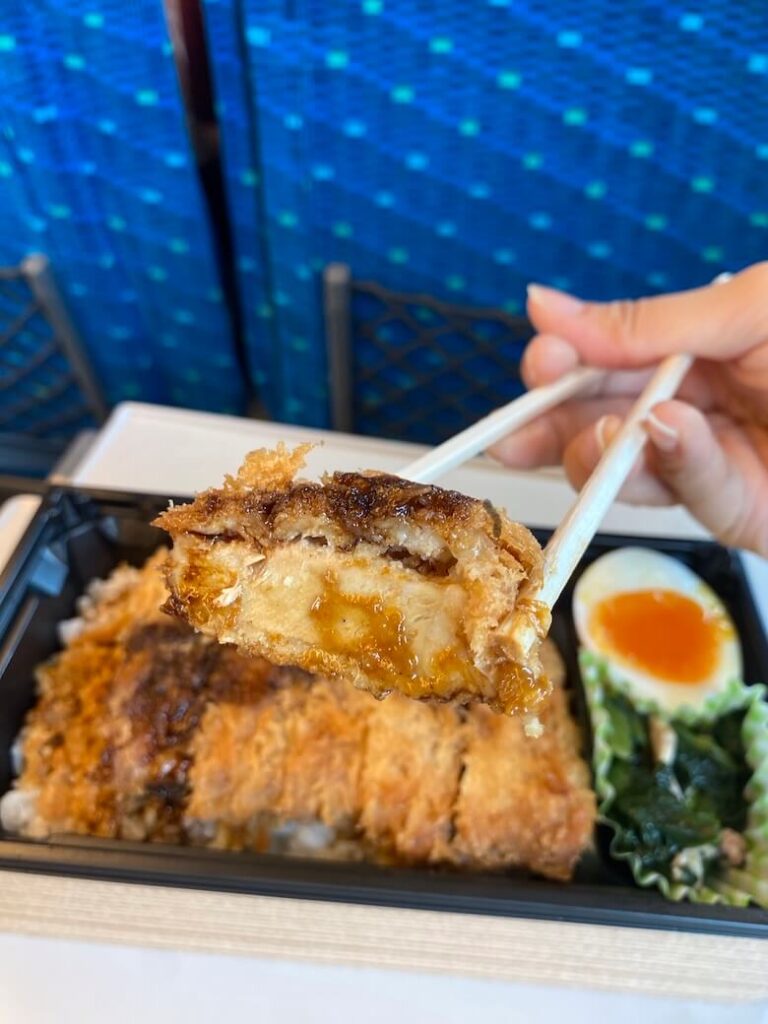
For our first ekiben, it was this katsumeshi bento (¥) from Jiyuken Osaka. The chicken katsu is fried to golden brown perfection, lying upon a bed of white rice. Moreover, it comes with a savory brown sauce! Finally, to complete the main dish, they added a half-boiled egg and spinach to complete this lunch box.
While the crispy coating may have lost some of its crunch during our journey, the flavor is still pretty decent. Jiyuken has been making curry rice since 1910 in Osaka’s Namba district, and they are famous for mixing the curry right into the rice prior to serving.
Mid-Journey Munchies: Salmon Bento
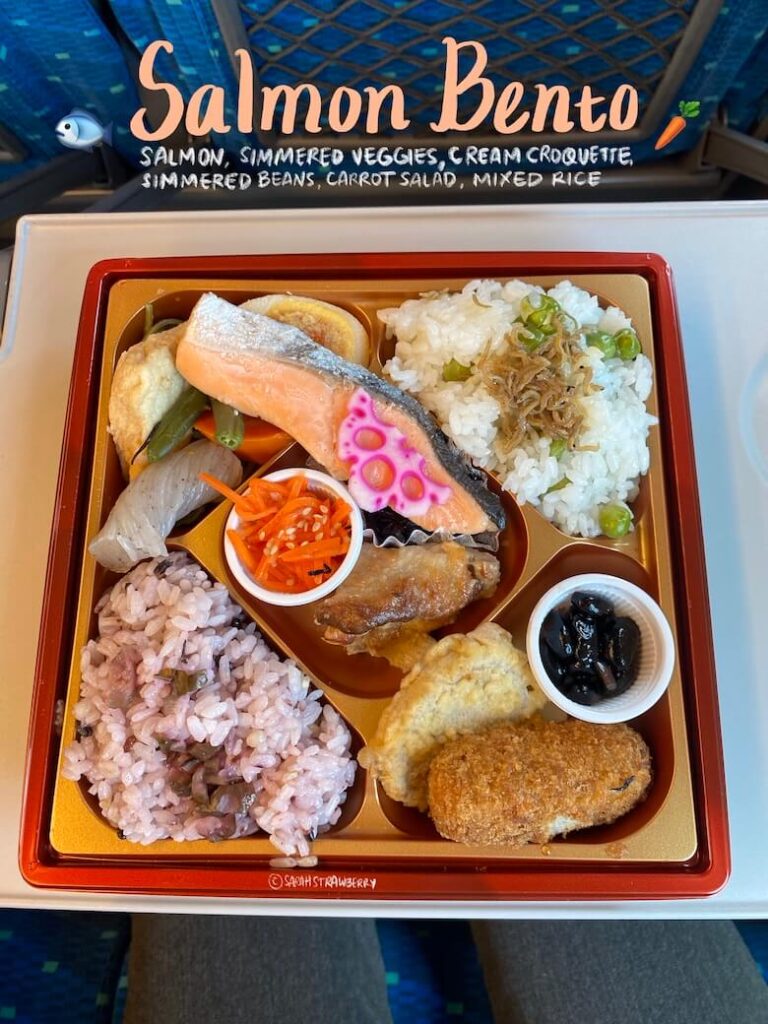
As our train zooms through the Japanese countryside, we cracked open a colorful salmon bento (¥1,150). This little box of joy is a feast for both the eyes and the palate. With its variety of side dishes and local ingredients, it’s like a miniature art exhibition you can eat! From the perfectly cooked white rice to the tender salmon, every bite is a reminder of why ekiben are the ultimate train travel companions.
I have always loved how Japanese people craft these bentos with mini servings of a lot of side dishes! The simmered vegetables were sweet and well-cooked, the carrots and black soybeans give some bite, and the fried minced meat and croquette were delightful. The rice has different mix-ins as well: peas with fried whitebait and pickles. Ah, how I love texture contrasts and unique flavor.
Thicc Katsu Sando Perfection
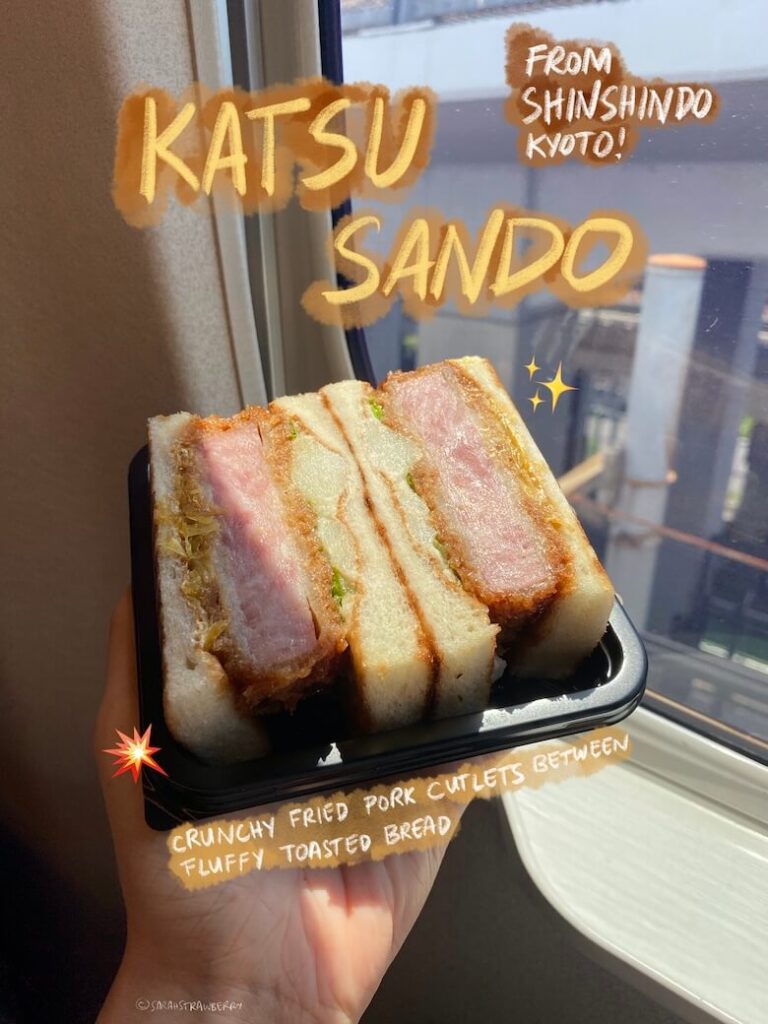
As we approach Tokyo Station, it’s time for our final ekiben – a pork katsu sando from Shinshindo Boulangerie.
This isn’t your average konbini (convenience store) sandwich. Picture this: thick, juicy pork cutlets nestled between pillowy slices of shokupan bread, slathered with a tonkatsu sauce so intense it’ll make your taste buds dance.
These sandwiches were so thick I had a hard time taking a bite out of it. Once I did, though, it was a burst of savory flavors and crunch texture. It’s the best way to end our long-distance train journey!
Travel Tip! ✨
One of the most popular ekiben shop in Tokyo station is called Ekibenya Matsuri. They sell 170 different types!
The Ekiben Experience: More Than Just a Meal
Ekiben aren’t just lunch boxes – they’re a window into Japanese cuisine and culture. From the traditional wooden boxes to the regional specialties, each ekiben tells a story of its particular region. It’s like taking a culinary tour of Japan without ever leaving your seat!
Pssst, Tabelog also has an ekiben ranking for your most updated list!
So next time you’re zipping through Japan on the Shinkansen, don’t settle for boring old konbini sandwiches. Grab an ekiben and let your taste buds take a journey of their own. Just remember to say “Itadakimasu” before diving in – it’s the polite thing to do when you’re about to devour a piece of culinary art.
Buy a Japan Rail Pass for the most convenient traveling experience!
Pin It!
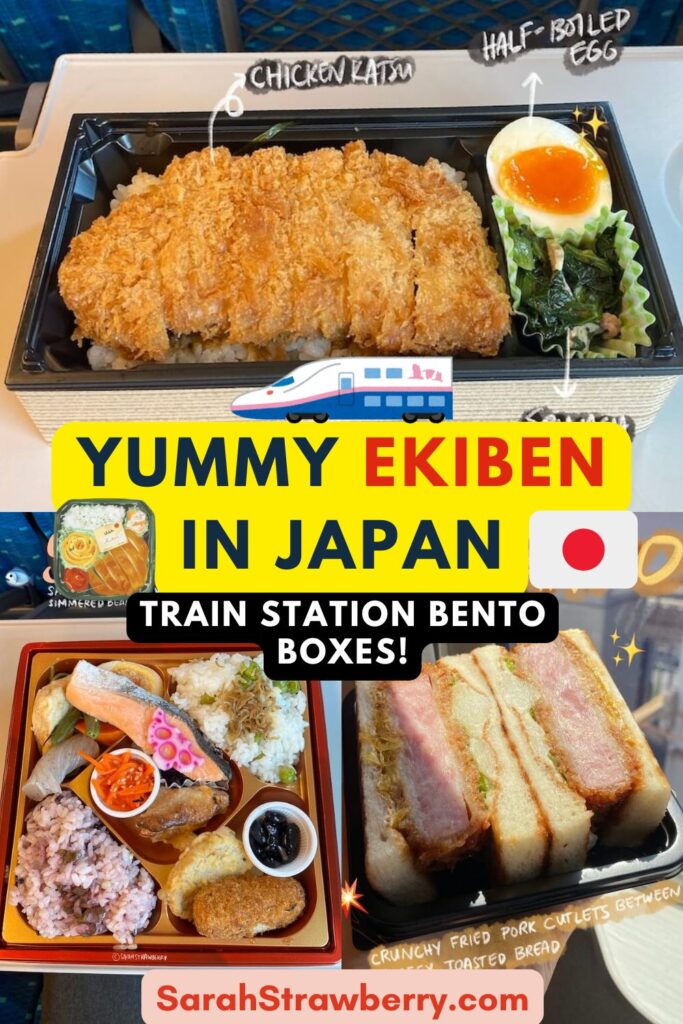

One thought on “Ekiben in Kyoto Station: Shinkansen Bento Story”